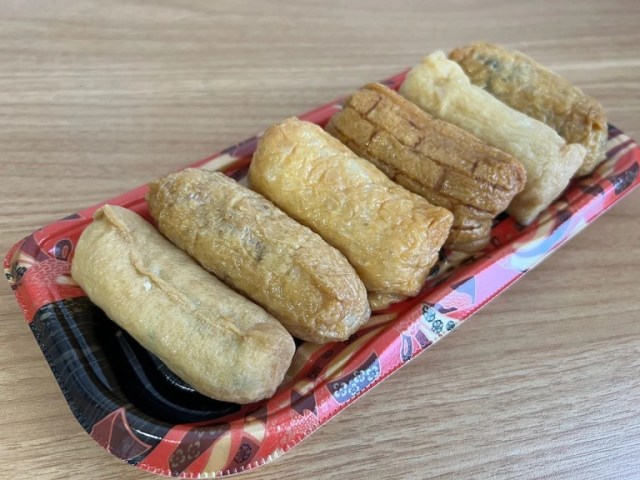
Unassuming inarizushi just might be the best bento to grab at Tokyo Station.
Inside JR Tokyo Station, there are a lot of…well, there’s a lot of everything. A lot of train lines (10 regular and four Shinkansen). A lot of people (almost half a million passengers a day). And a lot of bento boxed lunch options.
With too many bento options to count but only one stomach, obviously you’re going to have to narrow down your choices. Helpfully, Gransta and Ecute Tokyo (a pair of shopping areas connected to and within JR Tokyo Station) have recently released a list of their most popular, best-selling bento.
At the top of the ranking is the premium Jo-nigiri sushi set from Tsukiji Takewaka’s Gransta branch, and at number three is the Fukagawa Bento with Fukagawa-meshi, a dish where rice and clams are steamed in the same pot, from Tsukiji Kiyomura. Since the Gransta/Ecute bento rankings exclude bento from other regions shipped in to Tokyo Station, it’s not surprising to see sushi and Fukagawa-meshi in the top three, as they’re both things Tokyo is famous for. What did surprise us, though, is the second-most popular JR Tokyo Station bento: the Gransta-Exclusive Six-piece Inarizushi Assortment from Mameda.
Inarizushi is a kind of sushi in which vinegared rice is wrapped in a thin sheet of fried tofu. Different shops and restaurants will mix different things in with the rice for different flavors, but with Mameda’s inarizushi set sandwiched between the more luxurious sushi and Fukagawa-meshi bento, we wondered what made it so popular, so we decided to try it for ourselves.
Sure enough, when we arrived at Mameda’s counter inside the JR Tokyo Station ticket gates on basement level 1, there was a line of people waiting to buy their inarizushi.
▼ Inarizushi
You can order individual pieces, but we went with the Gransta-Exclusive Six-piece Inarizushi Assortment, which is priced at 960 yen (US$6.95).
That price works out to 160 yen per piece, which is a little on the pricy side for inarizushi, but not prohibitively so.
Appearance-wise, these aren’t especially different from the inarizushi you’ll find at Japanese supermarkets. The set gets you one inarizushi each with anago (saltwater eel), shiitake mushroom, wasabi, ginger, and gomoku (carrot, shiitake, and lotus root) fillings. The sixth piece gets a special filling that changes each month, and when we stopped by in July it was myoga (Japanese ginger flower buds).
We tasted them one at a time, and they were all good. However, as a simple dish that Japan’s been eating for generations, inarizushi is almost always good. Even supermarket and convenience store inarizushi is pretty tasty, and while Mameda’s is clearly a step above those, it’s not like it’s going to completely change anyone’s perceptions by reaching some sort of previously unfulfilled potential that we never knew inarizushi had.
But as we continued eating, the Gransta-Exclusive Six-piece Inarizushi Assortment’s number-two ranking started to make sense.
Like we mentioned above, Tokyo Station is the nexus of a lot of different train lines, and while it’s a commuter hub, it’s also one of the primary jumping-off points for travel to other parts of Japan. If you’re going to be spending the next few hours on a train to get to your vacation destination, you’re going to need something to eat along the way, so what’s the best thing to choose?
You want something filling, but not so heavy that you’ll still be stuffed when you get off the train. The opportunity to eat lots and lots of local regional foods is, after all, one of the primary reasons people travel in Japan. And if you’re going to be eating on the train, out of consideration to the other passengers you want something that doesn’t have a strong smell and isn’t going to make a mess.
Inarizushi checks off a lot of those boxes. It has that magical filling-but-light quality that’ll keep your stomach from rumbling but still leave you with space to go get some Nagoya chicken wings, Kyoto green tea sweets, or Hiroshima okonomiyaki as soon as you get off the train. There’s no risk of splashing and little chance of spilling anything as you eat it. Mameda’s six-flavor assortment gives you some variety to enjoy without having to run around to a bunch of different shops or hash out the selections yourself if you’re in a hurry to get to your platform, and it’s also easy to share with friends, family, or whoever else you’re traveling with.
Taking all that into consideration, Mameda’s inarizushi set really is a great choice, not necessarily as a culinary destination itself, but as arguably the ideal part-of-the-journey meal.
Shop information
Mameda (Gransta branch) / 豆狸(グランスタ店)
Address: Tokyo-to, Chiyoda-ku, Marunouchi 1-9-1, inside JR Tokyo Station ticket gates, basement level 1, near Marunouchi Chika Chuo Gate
東京都千代田区丸ノ内1-9-1 JR東京駅改札内B1F 丸の内地下中央口改札
Open 8 a.m.-10 p.m. (Monday-Saturday), 8 a.m.-9 p.m. (Sunday, holidays)
Website
Photos ©SoraNews24
● Want to hear about SoraNews24’s latest articles as soon as they’re published? Follow us on Facebook and Twitter!

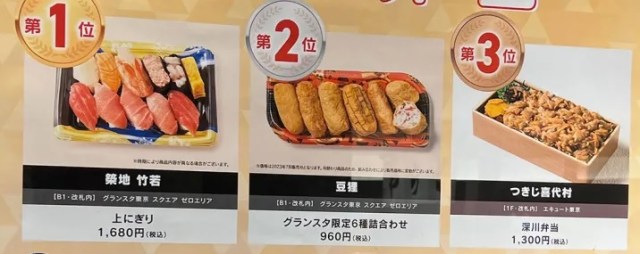
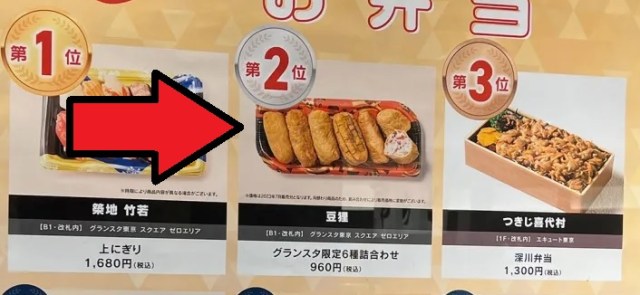
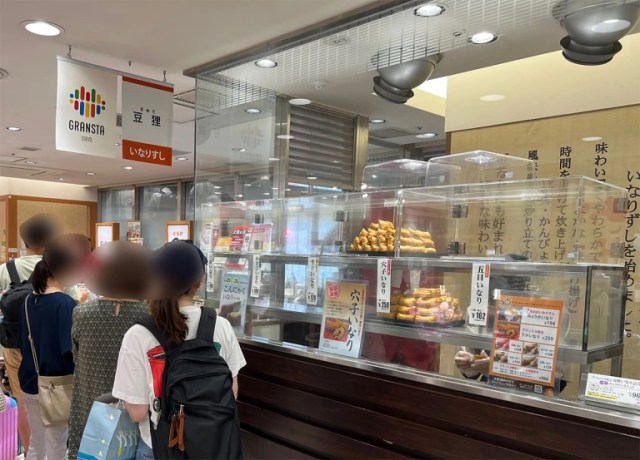
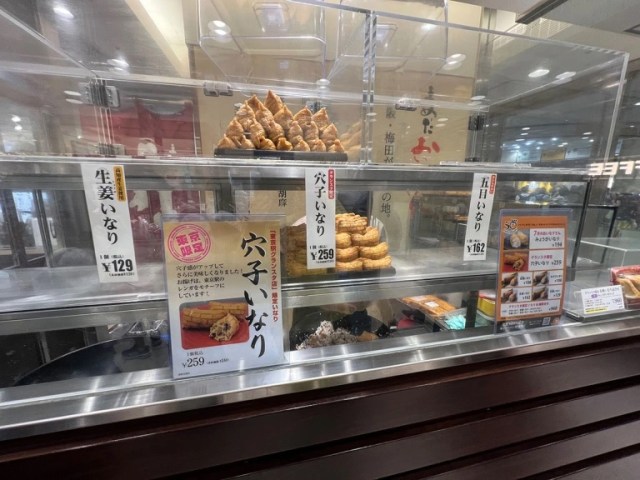
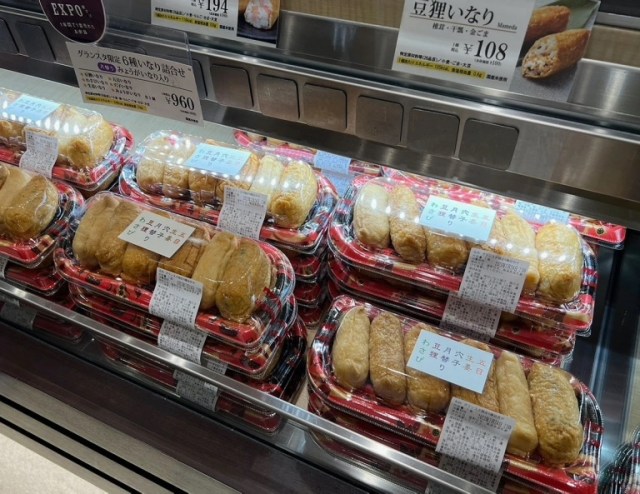

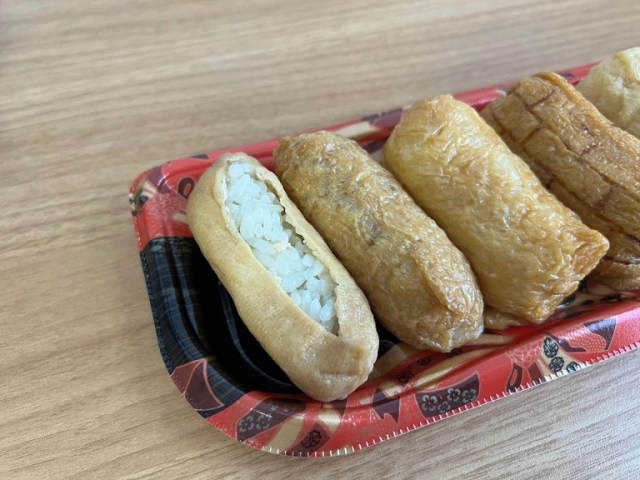

 Japanese boxed lunches pulling into France at authentic bento stand opening in Paris station
Japanese boxed lunches pulling into France at authentic bento stand opening in Paris station Famous train station bento boxed lunches, but in a can? Taste-testing canned ekiben【Taste test】
Famous train station bento boxed lunches, but in a can? Taste-testing canned ekiben【Taste test】 The five best bento boxed lunches sold at train stations in east Japan
The five best bento boxed lunches sold at train stations in east Japan Shinjuku Bento surprises us with historic ingredient from the samurai era
Shinjuku Bento surprises us with historic ingredient from the samurai era Tokyo bento boxed lunch shop charges different prices depending on how heavy your laptop is
Tokyo bento boxed lunch shop charges different prices depending on how heavy your laptop is Disillusionment at Tsukiji’s tourist-target prices led us to a great ramen restaurant in Tokyo
Disillusionment at Tsukiji’s tourist-target prices led us to a great ramen restaurant in Tokyo More Than a Capsule Stay: Why Solo Travelers Choose “global cabin Yokohama Chinatown”
More Than a Capsule Stay: Why Solo Travelers Choose “global cabin Yokohama Chinatown” Is this the most relaxing Starbucks in Japan?
Is this the most relaxing Starbucks in Japan? Let’s make some French cuisine using two bucks worth of junk food from the convenience store!
Let’s make some French cuisine using two bucks worth of junk food from the convenience store! Japanese ex-pro wrestler Chigusa Nagayo saves woman from assault in carpark
Japanese ex-pro wrestler Chigusa Nagayo saves woman from assault in carpark Starbucks Japan releases new zodiac chilled cup drink for 2026
Starbucks Japan releases new zodiac chilled cup drink for 2026 Drunk cycling can result in an instantly suspended driver’s license in Japan
Drunk cycling can result in an instantly suspended driver’s license in Japan Turns out you can draw all four original starter Pokémon with just three colored pencils【Video】
Turns out you can draw all four original starter Pokémon with just three colored pencils【Video】 Renowned Japanese calligraphy teacher ranks the top 10 kanji that foreigners like
Renowned Japanese calligraphy teacher ranks the top 10 kanji that foreigners like “The best ryokan I’ve ever visited” – A photo tour of Akita Prefecture’s Miyakowasure inn
“The best ryokan I’ve ever visited” – A photo tour of Akita Prefecture’s Miyakowasure inn 7-Eleven Japan starts new temporary luggage storage service in over 300 branches
7-Eleven Japan starts new temporary luggage storage service in over 300 branches Starbucks teams up with 166-year-old Kyoto doll maker for Year of the Horse decorations【Photos】
Starbucks teams up with 166-year-old Kyoto doll maker for Year of the Horse decorations【Photos】 Tokyo’s Tsukiji sushi neighborhood asks tour groups to stay away for the rest of the month
Tokyo’s Tsukiji sushi neighborhood asks tour groups to stay away for the rest of the month Street Fighter Hadouken Churros to be launched and eaten in Tokyo, Okami pudding on offer too
Street Fighter Hadouken Churros to be launched and eaten in Tokyo, Okami pudding on offer too Japanese woman mistaken for bear
Japanese woman mistaken for bear Return of Totoro sequel short anime announced for Ghibli Park
Return of Totoro sequel short anime announced for Ghibli Park Starbucks on a Shinkansen bullet train platform: 6 tips for using the automated store in Japan
Starbucks on a Shinkansen bullet train platform: 6 tips for using the automated store in Japan Japan’s human washing machines will go on sale to general public, demos to be held in Tokyo
Japan’s human washing machines will go on sale to general public, demos to be held in Tokyo Japanese train company is letting fans buy its actual ticket gates for their homes
Japanese train company is letting fans buy its actual ticket gates for their homes Is China’s don’t-go-to-Japan warning affecting tourist crowds in Tokyo’s Asakusa neighborhood?
Is China’s don’t-go-to-Japan warning affecting tourist crowds in Tokyo’s Asakusa neighborhood? Starbucks Japan unveils new Christmas goods and a rhinestone tumbler that costs 19,500 yen
Starbucks Japan unveils new Christmas goods and a rhinestone tumbler that costs 19,500 yen Tokyo considering law requiring more trash cans following litter increase in heavily touristed area
Tokyo considering law requiring more trash cans following litter increase in heavily touristed area Nintendo’s Kirby now delivering orders at Kura Sushi restaurants, but not in Japan
Nintendo’s Kirby now delivering orders at Kura Sushi restaurants, but not in Japan Tokyo event lets you travel back in time, for free, to celebrate 100 years since Showa era start
Tokyo event lets you travel back in time, for free, to celebrate 100 years since Showa era start Survey asks foreign tourists what bothered them in Japan, more than half gave same answer
Survey asks foreign tourists what bothered them in Japan, more than half gave same answer Japan’s deadliest food claims more victims, but why do people keep eating it for New Year’s?
Japan’s deadliest food claims more victims, but why do people keep eating it for New Year’s? We deeply regret going into this tunnel on our walk in the mountains of Japan
We deeply regret going into this tunnel on our walk in the mountains of Japan Studio Ghibli releases Kodama forest spirits from Princess Mononoke to light up your home
Studio Ghibli releases Kodama forest spirits from Princess Mononoke to light up your home Major Japanese hotel chain says reservations via overseas booking sites may not be valid
Major Japanese hotel chain says reservations via overseas booking sites may not be valid Put sesame oil in your coffee? Japanese maker says it’s the best way to start your day【Taste test】
Put sesame oil in your coffee? Japanese maker says it’s the best way to start your day【Taste test】 The top 10 annoying foreign tourist behaviors on trains, as chosen by Japanese people【Survey】
The top 10 annoying foreign tourist behaviors on trains, as chosen by Japanese people【Survey】 No more using real katana for tourism activities, Japan’s National Police Agency says
No more using real katana for tourism activities, Japan’s National Police Agency says Starbucks Japan reveals new sakura drinkware collection, inspired by evening cherry blossoms
Starbucks Japan reveals new sakura drinkware collection, inspired by evening cherry blossoms This is what a 10,000-yen (US$92) Tokyo bento boxed lunch looks like【Taste test】
This is what a 10,000-yen (US$92) Tokyo bento boxed lunch looks like【Taste test】 Japan’s top train station bento boxed lunches for 2016, as picked by travelers
Japan’s top train station bento boxed lunches for 2016, as picked by travelers Tokyo Station staff share their top 10 favorite ekiben
Tokyo Station staff share their top 10 favorite ekiben Japanese freight container bento satisfies our hunger for unusual lunches
Japanese freight container bento satisfies our hunger for unusual lunches Secret Kitchen bento serves Japanese flowers, birds, wind and moon in a box, but is it worth it?
Secret Kitchen bento serves Japanese flowers, birds, wind and moon in a box, but is it worth it? We try one ekiben shop’s three most popular bento boxes- out of a selection of 170 kinds
We try one ekiben shop’s three most popular bento boxes- out of a selection of 170 kinds The 5 best Japanese bento to buy at Kyoto Station
The 5 best Japanese bento to buy at Kyoto Station Kyoto’s Nishiki Market has great bento boxed lunches, and here are our top 3 picks
Kyoto’s Nishiki Market has great bento boxed lunches, and here are our top 3 picks THAT MUCH for white rice and one tiny plum? Eating Japan’s most-expensive “cheap” bento【Taste test】
THAT MUCH for white rice and one tiny plum? Eating Japan’s most-expensive “cheap” bento【Taste test】 Japan’s new bento has people talking and hearts burning because it’s all fried chicken skins
Japan’s new bento has people talking and hearts burning because it’s all fried chicken skins Haneda Market: Tokyo Station conveyor belt sushi restaurant is special on two days of the week
Haneda Market: Tokyo Station conveyor belt sushi restaurant is special on two days of the week Cute ekiben station bento looks like it’s from Japan but it’s from a different place entirely
Cute ekiben station bento looks like it’s from Japan but it’s from a different place entirely This ekiben train station bento is filled with surprises
This ekiben train station bento is filled with surprises Tokyo Station’s new guidance robot is extremely terrifying, pretty helpful【Video】
Tokyo Station’s new guidance robot is extremely terrifying, pretty helpful【Video】 Japan’s favorite pork cutlet sandwich maker also has awesome katsudon restaurant in Tokyo Station
Japan’s favorite pork cutlet sandwich maker also has awesome katsudon restaurant in Tokyo Station
Leave a Reply